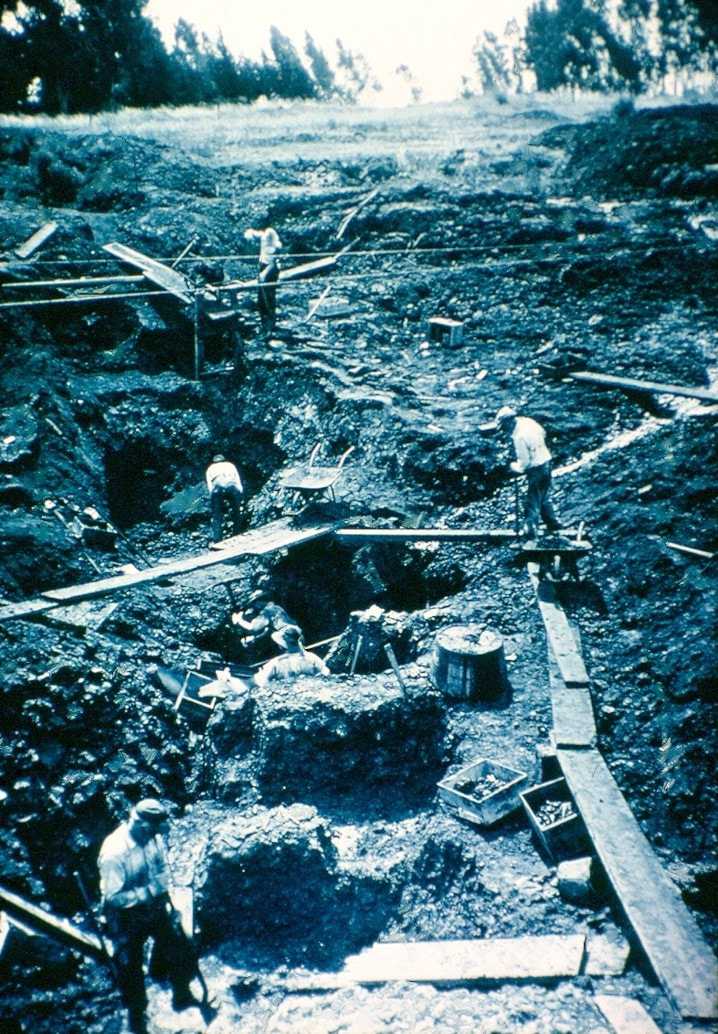March 13, 10am - noon
Steele/Burnand Anza-Borrego Desert Research Center, 401 Tilting T Drive
Lecture is Free, Open to the Public
Petroleum seeps consist of the natural migration of crude oil, bitumen, asphaltum, gas, vapors and groundwater. They are truly one of nature’s great mysteries. In California there are several hundred general localities of petroleum seeps known to occur in at least 29 counties. Crude oil and gas are formed deep within the Earth’s crust from the alteration of organic-rich sediment by the action of heat, pressure and anaerobic bacteria. Petroleum becomes trapped in geologic structures or within porous rock units and is forced to the surface through a complex permeable pathway.
Steve will be discussing how petroleum forms, its complex journey to the surface and petroleum seeps’ unusual surface occurrences. Seeps can contain a paleontological bonanza, the most famous being those at Rancho La Brea in Los Angeles. Over 55 oil fields in California have been discovered by drilling alongside the natural surface occurrence of petroleum.
This lecture will dwell deep into the mysteries associated with natural petroleum seeps.
Steele/Burnand Anza-Borrego Desert Research Center, 401 Tilting T Drive
Lecture is Free, Open to the Public
Petroleum seeps consist of the natural migration of crude oil, bitumen, asphaltum, gas, vapors and groundwater. They are truly one of nature’s great mysteries. In California there are several hundred general localities of petroleum seeps known to occur in at least 29 counties. Crude oil and gas are formed deep within the Earth’s crust from the alteration of organic-rich sediment by the action of heat, pressure and anaerobic bacteria. Petroleum becomes trapped in geologic structures or within porous rock units and is forced to the surface through a complex permeable pathway.
Steve will be discussing how petroleum forms, its complex journey to the surface and petroleum seeps’ unusual surface occurrences. Seeps can contain a paleontological bonanza, the most famous being those at Rancho La Brea in Los Angeles. Over 55 oil fields in California have been discovered by drilling alongside the natural surface occurrence of petroleum.
This lecture will dwell deep into the mysteries associated with natural petroleum seeps.
Steve Mulqueen:
Stephen Mulqueen is a geologist and active member of the MSSC and Ventura Gem & Mineral Society. In
1978, Steve earned a Bachelor of Science degree in Geology at Cal Poly Pomona. He began his career while
employed by American Borate Company at their Billie Borate Mine in Death Valley, CA.
From 1979 – 1982, Steve worked as a geologist at Kerr-McGee Chemical Corporation’s solution mining
operations at Searles Lake near Trona, CA. Much of his career involved over 27 years with the State of
California, including employment with the Dept. of Conservation (Division of Oil & Gas) and later with the
California State Lands Commission.
One of his hobbies includes rockhounding, in search of unusual and rare rocks, minerals and fossils. Some of
his discoveries have been donated to college geology labs or used as grade school educational material.
He volunteers his free time conducting field trips, writing professional articles and presenting lectures. Steve
says his efforts at community outreach gives him the opportunity to share what he knows and enables him to
learn from other in the exchange of information. Steve is retired and currently resides in St. George, Utah.
Stephen Mulqueen is a geologist and active member of the MSSC and Ventura Gem & Mineral Society. In
1978, Steve earned a Bachelor of Science degree in Geology at Cal Poly Pomona. He began his career while
employed by American Borate Company at their Billie Borate Mine in Death Valley, CA.
From 1979 – 1982, Steve worked as a geologist at Kerr-McGee Chemical Corporation’s solution mining
operations at Searles Lake near Trona, CA. Much of his career involved over 27 years with the State of
California, including employment with the Dept. of Conservation (Division of Oil & Gas) and later with the
California State Lands Commission.
One of his hobbies includes rockhounding, in search of unusual and rare rocks, minerals and fossils. Some of
his discoveries have been donated to college geology labs or used as grade school educational material.
He volunteers his free time conducting field trips, writing professional articles and presenting lectures. Steve
says his efforts at community outreach gives him the opportunity to share what he knows and enables him to
learn from other in the exchange of information. Steve is retired and currently resides in St. George, Utah.


